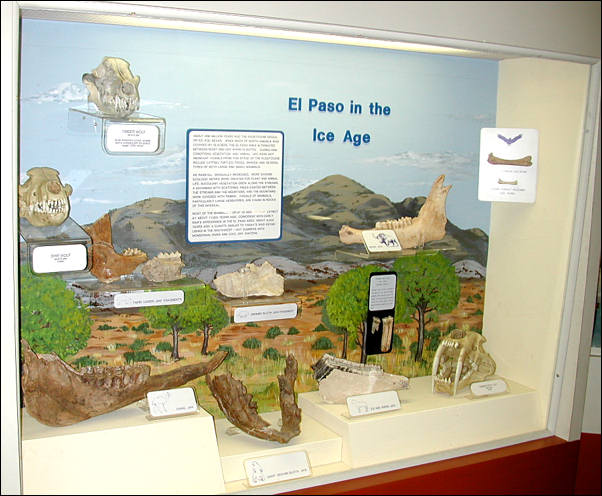

The northern Chihuahuan Desert is rich with fossil vertebrates. Personnel from the University of Texas at El Paso (UTEP) have studied such fossils for some three-quarters of a century, and the paleontological gallery (the Strain Gallery) is named after an early paleontologist at the UTEP.
The Rio Grande Rift, a linear depression containing the Rio Grande, has accumulated sediments over millions of years. The current valley is cut into the upper sediments that were deposited in the Late Pliocene and the earlier portion of the Pleistocene geologic epochs. These sediments have produced a number of fossils, ranging from turtles to camels and mammoths, that are reposited in the Centennial Museum/Laboratory for Environmental Biology collections.
A number of other fossil-producing sites occur in the region; among these, are caves. The Laboratory for Environmental Biology, the biological research arm of the Centennial Museum, has been active in studying cave fossil faunas for over 40 years.
Ice Age exhibit, the Strain Gallery.
Relatively few of the thousands of fossil specimens collected over the years are on display, but most have been utilized in past research and are available for future studies for qualified researchers.
Last Update: 3 Nov 2007